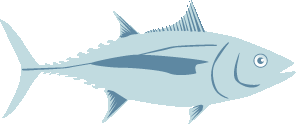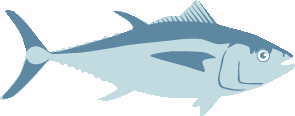Overview
What is a Completed FIP?
Completed FIPs are those that have independent verification that they have achieved their environmental objectives and/or graduated to MSC full assessment or other program assessment. Completed FIPs no longer report on their environmental performance but may choose to voluntarily report on their social performance.
Date of Completion: Jun 2024
Explanation of Completion: FIP achieved MSC certification.
The fishery being assessed is the Pacific Tuna Longline Fishery targeting albacore (Thunnus alalunga), bigeye (Thunnus obesus) and yellowfin (Thunnus albacares) tuna across all regions of the Pacific Ocean.
The Pacific Tuna Longline Fishery aims to meet the rising global demand for tuna in a sustainable manner by assuring catches do not exceed sustainable levels, promoting the ecosystem based approach to fisheries management and strengthening policy and governance systems in the region.
Pacific Tuna Longline Fishery goals:
- Sustainable Fish Stocks – To ensure tuna and other primary species catches across the Pacific Ocean do not exceed sustainable levels
- Minimising Environmental Impacts – To promote the ecosystem-based approach to fisheries management
- Effective Management – To strengthen governance systems in the WCPFC, IATTC and Pacific Tuna Longline fishery.
The fishery being assessed is the Pacific Tuna Longline Fishery targeting albacore (Thunnus alalunga), bigeye (Thunnus obesus) and yellowfin (Thunnus albacares) tuna across all regions of the Pacific Ocean.
- Achieve sustainable stock status’ for albacore, bigeye and yellowfin that is consistent with the Maximum Sustainable Yield (MSY) and management systems strengthened to achieve this.
- To improve the availability of accurate data on catches, retained and especially bycatch by strengthening information systems and training.
- To collaborate with other institutions working on tuna fisheries issues in the country, including working together to improve the management and policy towards sustainable fisheries for example Harvest Control Rules.
- Strengthen ETP and retained species management strategies.
- To promote traceability to ensure that the origins and status of Tuna products purchased are well-known and all coming from legal fisheries by engaging the supply chains that support improvement through the implementation of e-monitoring.
- Improve governance and decision making process.
- To achieve a certifiable status by 2024.
FIP at a Glance
| 18% | 29% | 54% |
This pie chart represents completed environmental actions. Non-completed environmental actions may contain completed sub-tasks that are not illustrated here. For more information on environmental action progress visit the Actions Progress tab.
- Complete
- Incomplete
TraceabilityEcosystemRoundtable



